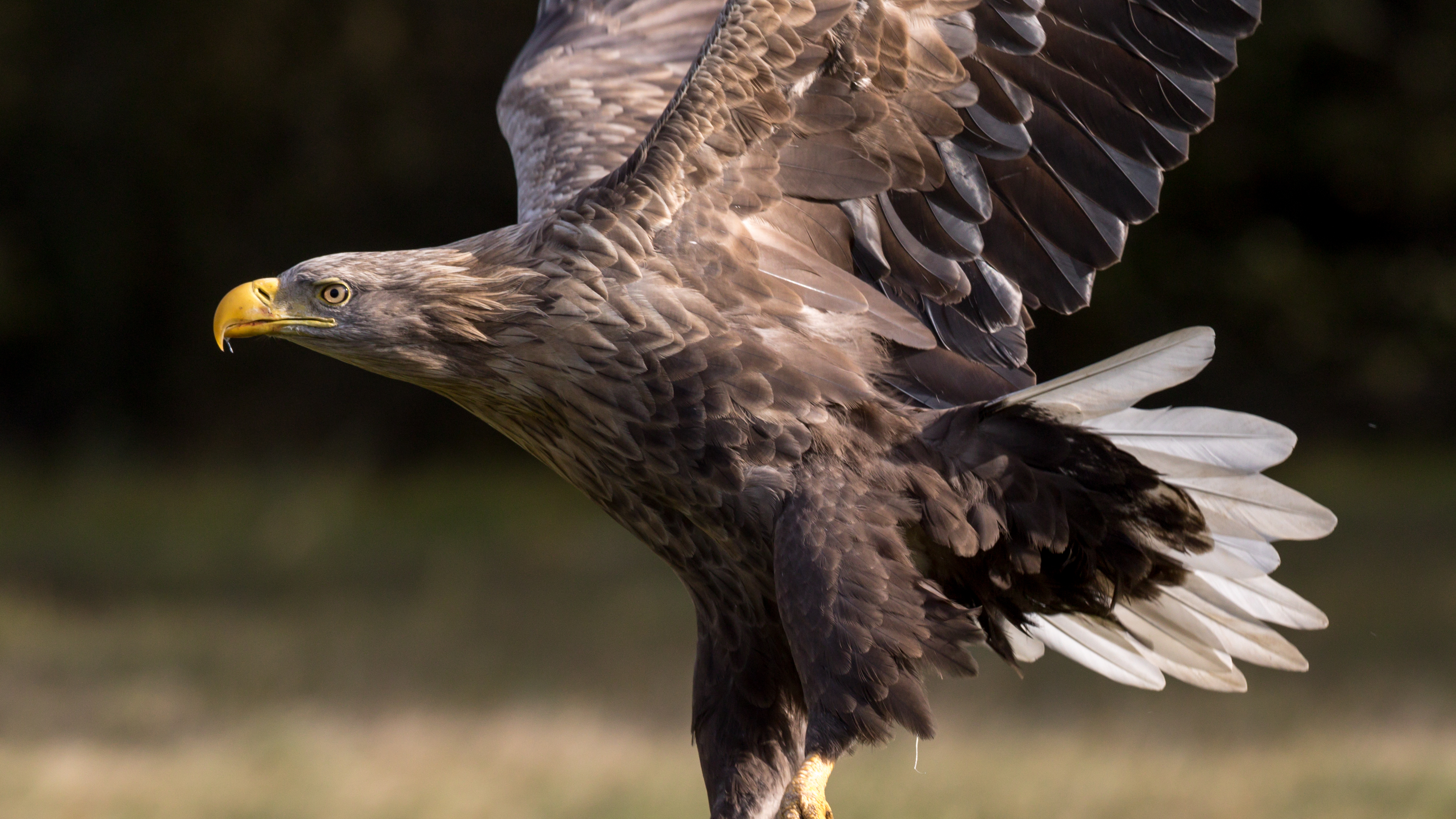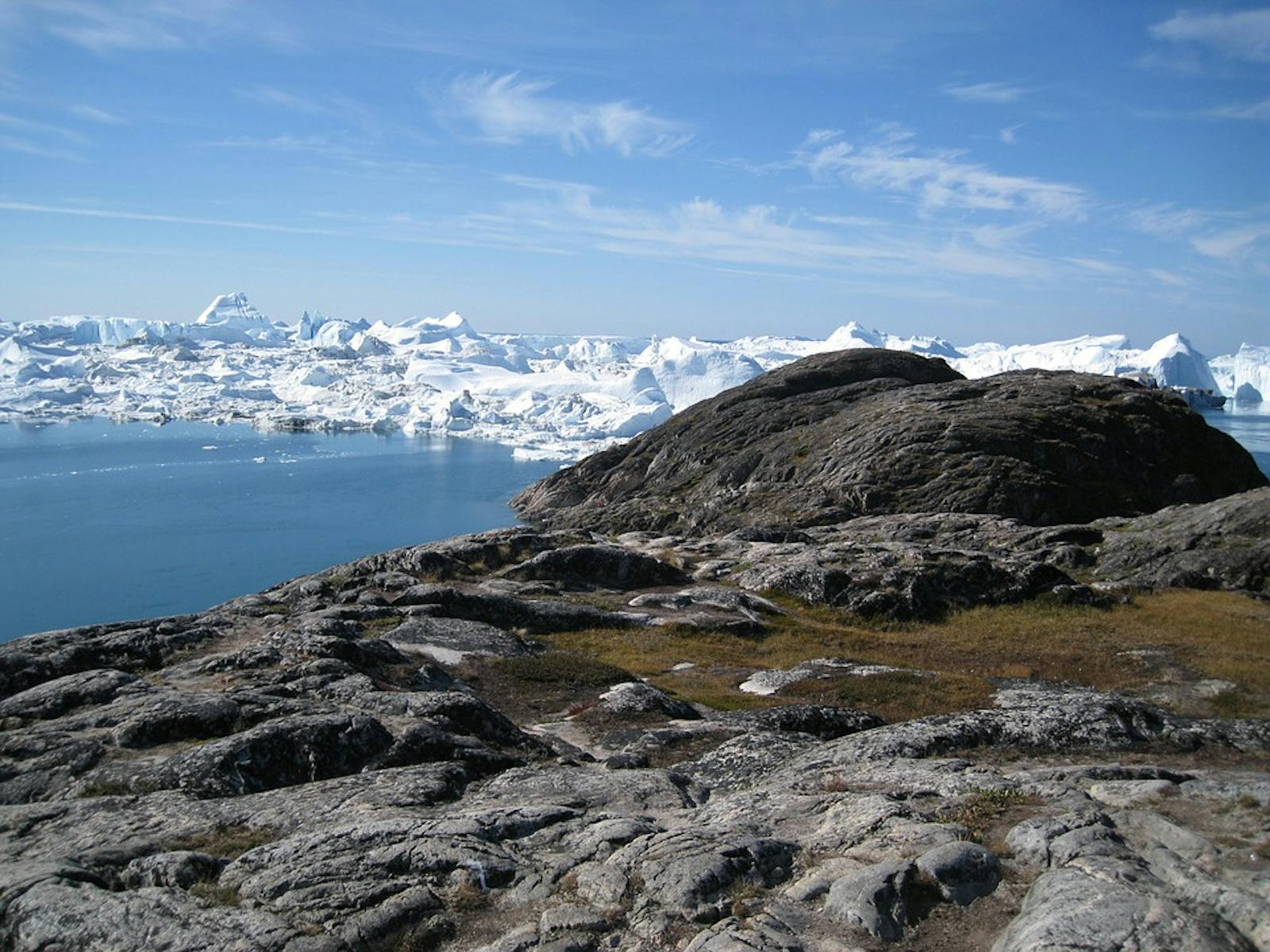Kalaallit Nunaat Arctic Steppe
The ecoregion’s land area is provided in units of 1,000 hectares. The protection goal is the Global Safety Net (GSN1) area for the given ecoregion. The protection level indicates the percentage of the GSN goal that is currently protected on a scale of 0-10.
Bioregion: Greenland (NA1)
Realm: Subarctic America
Ecoregion Size (1000 ha):
32,740
Ecoregion ID:
417
Conservation Target:
33%
Protection Level:
10
States: Denmark: Greenland (Kalaallit Nunaat)
Greenland has the second-largest ice cap in the world, covering 75-80%, following Antarctica, the largest island on Earth. Although the ice cap is declining in size due to global warming, ice-free areas remain limited, to the extent that only two ecoregions are defined for Greenland: the more southern and eastern Kalaallit Nunaat Arctic Steppe and the northern Kalaallit Nunaat High Arctic Tundra.
The Kalaallit Nunaat Arctic Steppe ecoregion occupies the southwestern coast of Greenland, across Baffin Bay from Canada’s (Nunavut) Baffin Island, and the southern two-thirds of eastern Greenland, west and north of Iceland. Arctic steppe constitutes a relic of the once widespread dry mammoth steppe of the Pleistocene glacial periods. The terrain of this ecoregion is mountainous with numerous fjords reaching into the interior and with many islands scattered along the coast. The bedrock is Precambrian (Archaean) with steep cliffs of granite and gneiss dominating the coastline. Only 33% of this ecoregion is protected, within Northeast Greenland National Park, but some 60% of the area outside protected areas is still intact.
The climate of this ecoregion ranges from low Arctic to high Arctic, except the inner fjord region of the southwestern coast, which is subarctic. In this area, the mean temperature of the warmest summer month (July) exceeds 10ºC, which is the usual demarcation between arctic and subarctic climates. Summer maximum temperatures in this part of the ecoregion can exceed 20ºC. Precipitation and humidity are both low in this ecoregion. Average annual precipitation in Nanortalik, in the southern portion of this ecoregion, is 900 mm, whereas Upernavik, in the northwestern portion, receives only 200 mm.

The flagship species of the Kalaallit Nunaat Arctic Steppe ecoregion is the white-tailed eagle. Image credit: Creative Commons
Vegetation varies according to distance from the exposed coastline, latitude, elevation, and available moisture. The driest areas are often those closest to the ice-cap; such areas have a dwarf-scrub heath or steppe vegetation. At the head of fjords where the climate is warmer, sheltered areas in the southwest support scrub and low forests dominated by green alder, downy birch, and Greenland mountain ash. Within the southernmost portion of Greenland, low birch forests cover less than 15% of the land area. The birches are generally 0.5–2 m tall, but can reach 10 m. This relatively warm area is dominated by dwarf-scrub heath, along with dry meadow and lichen heath.
On the part of the southwestern coast where ice-free land extends farthest inland, the climate inland has lower precipitation, a shorter duration of snow-cover, warmer summer temperatures, and colder winter temperatures than the exposed coast. The vegetation transitions from grassy meadows and rich dwarf-shrub at the coast, to prairie and steppe with occasional salt pans and salt lakes in the interior. The steppe that covers much of this ecoregion is dominated by grasses such as purple reedgrass, Lapland reedgrass, and Alaskan wheatgrass, and sedges such as weak Arctic sedge and bog sedge.ii Heaths are dominated by black crowberry toward the coast and birch and mountain avens inland. In the warmer heads of fjords, rainfall is too low for large trees to grow, but willow scrub can reach 4–5 m in height along watercourses. Hot springs are common in some areas and have herb-rich willow scrubs.
Only 9 species of terrestrial mammals occur in Greenland—Arctic fox, Arctic wolf, polar bear, wolverine, reindeer (caribou), musk ox, ermine, Arctic hare, and northern collared lemming—but several of these were blocked by ice from dispersing to southern Greenland. Marine mammals include 6 species of seals. Of Greenland’s 60 species of breeding birds, half are resident only in summer. Some characteristic birds are white-tailed eagle, gyrfalcon, Atlantic puffin, white-fronted goose, whooper swan, snowy owl, rock ptarmigan, common raven, and Arctic redpoll.
Although Greenland’s human population has always been small, over-hunting (including of predators) and over-grazing by sheep have led to serious declines of some native species. Over-population of reindeer and subsequent vegetation change and population crashes are serious problems.ii Priority conservation actions for the next decade are: 1) expand the network of protected areas across the ecoregion to include currently unrepresented southern vegetation types; 2) prohibit incompatible uses such as mining and use of motorized vehicles within designated protected areas; and 3) protect vulnerable species such as the Arctic wolf from hunting and manage prey populations (especially reindeer) to prevent over-population, impacts on vegetation, and population collapse.
Citations
1. Kalaallit Nunaat Low Arctic Tundra. https://www.worldwildlife.org/ecoregions/na1113
2. Northeast Greenland National Park. https://en.wikipedia.org/wiki/Northeast_Greenland_National_Park
3. Böcher, J., and J.M. Petersen. 1997. Greenland. Pages 685-720 in F.E. Wielgolaski, ed. Ecosystems of the World: Polar and Alpine Tundra. Elsevier Science.



